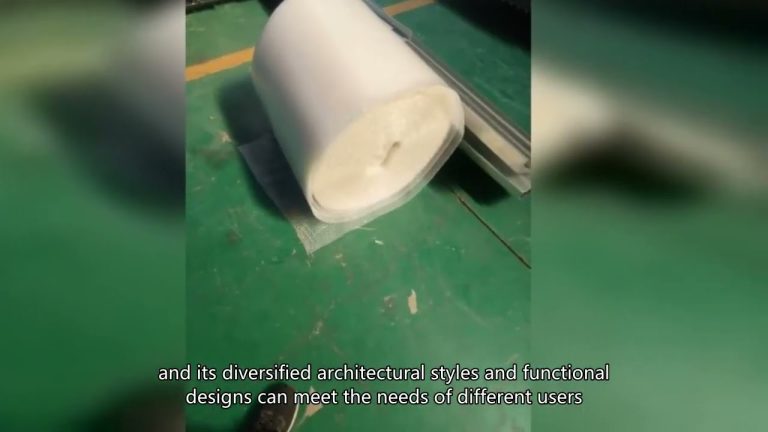The innovation practice of steel structure industry in sponge city construction
Table of Contents
Sustainable Steel Structures: A Key Component in Sponge City Development
The steel structure industry plays a crucial role in the construction of sponge cities, which are designed to absorb, store, and reuse rainwater to alleviate urban flooding. As urbanization continues to increase, the demand for sustainable infrastructure solutions has become more pressing. Steel structures offer a versatile and durable option for building the necessary infrastructure to support sponge city development.
One of the key innovations in the steel structure industry for sponge city construction is the use of prefabricated steel components. Prefabrication allows for faster and more efficient construction, reducing the overall time and cost of building sponge city infrastructure. This method also minimizes waste and disruption to the surrounding environment, making it a more sustainable option for urban development.
Another innovation in the steel structure industry is the use of high-strength steel materials. These materials offer greater structural integrity and durability, making them ideal for supporting the weight of water storage systems and other infrastructure components in sponge cities. High-strength steel also allows for more creative and innovative designs, enabling architects and engineers to create unique and visually appealing structures that enhance the overall aesthetic of the city.
In addition to prefabrication and high-strength materials, the steel structure industry is also exploring new technologies such as Building Information Modeling (BIM) and 3D printing. BIM allows for more accurate and efficient design and construction processes, while 3D printing offers a cost-effective and sustainable method for producing complex steel components. These technologies are revolutionizing the way steel structures are designed and built, making them more adaptable to the specific needs of sponge city development.
Furthermore, the steel structure industry is also focusing on sustainability and environmental impact in sponge city construction. By using recycled steel materials and implementing energy-efficient manufacturing processes, steel manufacturers are reducing their carbon footprint and contributing to a more sustainable built environment. Steel structures are also highly recyclable, making them a more environmentally friendly option compared to traditional building materials.
Overall, the innovation practice of the steel structure industry in sponge city construction is essential for creating sustainable and resilient urban environments. By embracing prefabrication, high-strength materials, new technologies, and sustainable practices, steel manufacturers are leading the way in developing innovative solutions for the challenges of urbanization and climate change. As sponge cities continue to grow in popularity, the steel structure industry will play a critical role in shaping the future of sustainable urban development.
Advancements in Steel Structure Technology for Effective Water Management in Sponge City Construction
The steel structure industry has been playing a crucial role in the construction of sponge cities, which are designed to effectively manage water and reduce the risk of flooding. With the increasing frequency of extreme weather events due to climate change, the need for innovative solutions in urban water management has become more pressing than ever. Steel structures have emerged as a key component in the development of sponge cities, offering a range of benefits that make them well-suited for this purpose.
One of the main advantages of steel structures in sponge city construction is their strength and durability. Steel is known for its high tensile strength, which allows it to withstand heavy loads and extreme weather conditions. This makes steel structures ideal for supporting the weight of green roofs, rain gardens, and other water management features that are commonly found in sponge cities. Additionally, steel structures are resistant to corrosion and decay, ensuring that they will remain in good condition for many years to come.
In addition to their strength and durability, steel structures also offer flexibility in design and construction. Steel can be easily shaped and molded into various forms, allowing architects and engineers to create innovative and aesthetically pleasing structures that enhance the overall design of a sponge city. Steel structures can also be prefabricated off-site and assembled on-site, reducing construction time and costs. This makes steel an attractive option for developers looking to build sponge cities in a timely and cost-effective manner.

Furthermore, steel structures are sustainable and environmentally friendly. Steel is one of the most recycled materials in the world, with a high recycling rate that helps to reduce the demand for new raw materials. By using steel structures in sponge city construction, developers can minimize their environmental impact and contribute to a more sustainable built environment. Additionally, steel structures can be designed to be energy-efficient, further reducing their carbon footprint and helping to mitigate the effects of climate change.
The innovation practice of the steel structure industry in sponge city construction is constantly evolving to meet the challenges of urban water management. One of the latest advancements in steel structure technology is the use of advanced coatings and finishes that enhance the performance and longevity of steel structures. These coatings can provide additional protection against corrosion, UV radiation, and other environmental factors, ensuring that steel structures will remain in good condition for many years to come.
Another innovation in steel structure technology is the development of smart steel structures that are equipped with sensors and monitoring systems. These systems can provide real-time data on the performance and condition of steel structures, allowing for proactive maintenance and repairs. By incorporating smart technology into steel structures, developers can ensure that their sponge cities remain resilient and effective in managing water.
In conclusion, the innovation practice of the steel structure industry in sponge city construction is essential for creating sustainable and resilient urban environments. Steel structures offer a range of benefits that make them well-suited for water management in sponge cities, including strength, durability, flexibility, and sustainability. With ongoing advancements in steel structure technology, developers can continue to push the boundaries of innovation and create sponge cities that are both functional and beautiful. By embracing steel structures as a key component of sponge city construction, we can build a more resilient future for our cities and communities.







